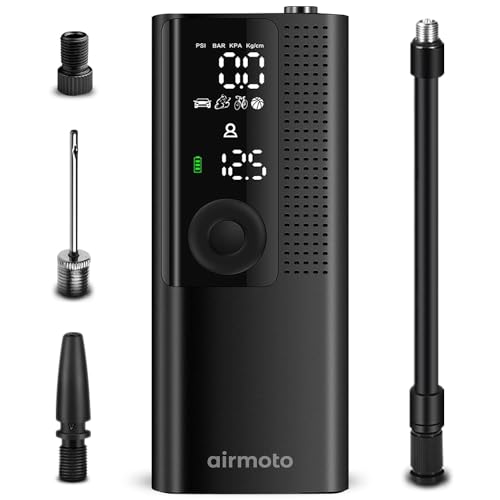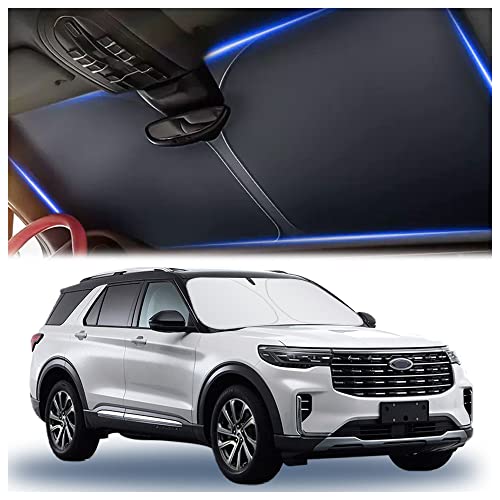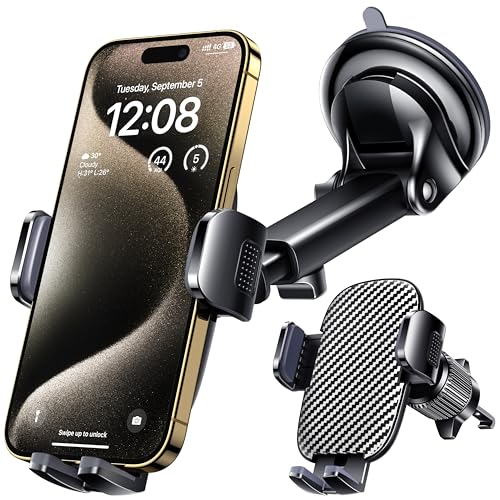Charging a car battery can vary based on several factors. Understanding these factors helps drivers know what to expect.
Many people rely on their vehicles daily. A dead battery can cause frustration and delays. Knowing how long it takes to charge a car battery is essential for every driver. The time it takes to charge depends on the battery type, the charger used, and the current charge level.
For instance, a standard charger may take several hours, while a quick charger could do it faster. If you ever find yourself in a situation where your battery is low, having this knowledge can save you time and stress. Let’s explore the details of charging a car battery and what affects the charging time.
Factors Affecting Charging Time
Charging time for a car battery depends on several factors. Battery size, charger type, and temperature can all affect how long it takes. Understanding these elements helps in planning when to charge your vehicle for the best results.
Charging time for a car battery isn’t a one-size-fits-all scenario. Several factors play a crucial role in determining how long it takes to fully charge your battery. Understanding these elements can help you manage your time better and ensure your vehicle is ready when you need it.Battery Size And Capacity
The size and capacity of your car battery are key factors affecting charging time. A larger battery, like those found in trucks or SUVs, typically takes longer to charge than a standard sedan battery. For example, if your car has a 70 Ah (amp-hour) battery, it will require more time to charge than a 50 Ah battery. Think about your daily driving habits. If you frequently take short trips, your battery may not fully charge. This can lead to longer charging times when you do plug it in. Are you aware of your battery’s capacity? Knowing this can help you estimate how long you might need to charge it.Charger Type And Output
The type of charger you use significantly impacts charging time. There are various chargers available, each with different outputs. For example, a standard 12V charger might offer 4 amps of output, while a fast charger can provide up to 20 amps or more. Using a fast charger can reduce charging time dramatically. However, high-output chargers can also generate heat, which may not be ideal for all battery types. Always check your battery specifications before choosing a charger. Are you using the right charger for your battery? Your choice can save you hours in charging time. In my experience, switching to a higher output charger cut my charging time in half, allowing me to get back on the road sooner. Understanding these factors empowers you to make informed decisions about your car battery’s maintenance and charging needs.Types Of Car Battery Chargers
Choosing the right charger is important. Different types serve different needs. Here, we explore two main types of car battery chargers: trickle chargers and fast chargers. Each has its own features and benefits.
Trickle Chargers
Trickle chargers are slow but steady. They provide a low current to the battery. This helps keep the battery topped off. They are great for long-term use.
These chargers are often used for vehicles not driven daily. They prevent the battery from draining completely. Most trickle chargers are easy to use. Simply connect and leave it to work.
Charging time varies. It can take several hours to a few days. This depends on the battery’s condition and size. Patience is key with trickle chargers.
Fast Chargers
Fast chargers are designed for quick charging. They deliver a high current to the battery. This can charge a dead battery in just an hour.
Fast chargers are ideal for emergencies. They are not suitable for long-term use. Overcharging can damage the battery. Always monitor the charging process.
These chargers are available in many models. Some have built-in safety features. This helps protect the battery while charging.
Charging Methods Explained
Understanding how to charge a car battery is important. Different methods can affect charging time. Here, we will explain two common charging methods: using a home charger and charging at a service station.
Using A Home Charger
Charging your car battery at home is convenient. Most electric vehicles come with a home charger. This charger connects to a standard wall outlet. Charging time varies based on the charger type.
Level 1 chargers are basic. They use a regular outlet. This method can take up to 12 hours for a full charge. Level 2 chargers are faster. They require a special outlet. Charging takes around 4 to 8 hours with this method.
Charging At A Service Station
Service stations offer fast charging options. These chargers can quickly power up your car. DC fast chargers are the most efficient. They can charge your battery to 80% in about 30 minutes.
Charging at a station is great for long trips. It reduces downtime. Always check the charging speed before you plug in. Knowing this helps you plan your travels better.
Typical Charging Durations
Charging a car battery can take different amounts of time. It depends on the type of charger used. Some chargers work slowly, while others charge faster. Understanding these times helps you plan better.
Slow Charging Times
Slow charging usually takes several hours. Most standard chargers fall into this category. A typical home charger takes about 6 to 12 hours. This is common for regular car batteries.
Slow charging is safe for the battery. It reduces the risk of overheating. This method is ideal for overnight charging. You can start your day with a full battery.
Fast Charging Times
Fast charging is much quicker. It can take as little as 30 minutes to 2 hours. Fast chargers deliver more power to the battery. This is great for quick top-ups.
Many electric car stations offer fast charging. They use high-powered chargers. These chargers can fill a battery quickly. Fast charging is perfect for busy schedules.
Impact Of Battery Condition
The condition of your car battery plays a crucial role in how long it takes to charge. A battery’s age, wear, and overall health can significantly impact charging times. Understanding these factors can help you maintain your battery better and avoid unexpected issues.
Age And Wear Of The Battery
As batteries age, their ability to hold a charge diminishes. Most lead-acid batteries last around three to five years, depending on usage and environmental factors. If your battery is approaching its end of life, expect longer charging times.
Have you ever noticed your car taking longer to start in colder weather? Older batteries struggle to deliver the power needed, which means it might take more time to charge fully. Regularly checking your battery’s age can save you from being stranded.
Health Of Battery Cells
The health of individual battery cells greatly affects charging efficiency. A battery with damaged or weak cells can take significantly longer to charge. If you suspect any issues, testing the battery’s health can provide clarity.
Think about a time when your battery seemed fine, but it just wouldn’t hold a charge. This could be a sign of failing cells. If you find yourself in this situation, consider replacing the battery to ensure reliable performance.
Regular maintenance and testing can help you keep tabs on your battery’s health. Addressing issues early can save you time and hassle down the road. Wouldn’t you prefer to avoid the stress of a dead battery at the most inconvenient moment?
Tips For Faster Charging
Charging a car battery can take time. You can speed up the process with a few simple tips. Follow these suggestions to charge your battery more efficiently.
Choosing The Right Charger
Select a charger that matches your battery type. Look for smart chargers. They adjust the current automatically. This prevents damage and helps charge faster.
Check the amp rating. A higher amp rating means quicker charging. But be careful. Too high can cause overheating.
Avoiding Overcharging
Overcharging can damage your battery. It leads to heat buildup. This shortens battery life.
Use a charger with an automatic shut-off feature. This stops charging when the battery is full. Monitor the charging process. Disconnect the charger once fully charged.
Regularly check battery health. A healthy battery charges faster. Replace old batteries to maintain performance.
Safety Considerations
Charging a car battery is often straightforward, but safety should always come first. Understanding how to handle this task can prevent accidents and ensure your battery charges efficiently. Here’s a look at key safety considerations you should keep in mind.
Preventing Overheating
Overheating can cause damage to your car battery and even lead to dangerous situations. Always monitor the battery temperature during charging. If you notice it getting excessively hot, stop the charging process immediately.
- Use a charger with an automatic shut-off feature.
- Avoid charging in direct sunlight or hot environments.
- Give the battery time to cool down after use.
Have you ever touched a battery after charging? That heat can be a sign of trouble. Taking precautions helps you avoid mishaps and extends the life of your battery.
Proper Handling During Charging
How you handle the battery is crucial for safety. Always wear gloves and goggles to protect yourself from any accidental acid spills or sparks. Ensure the area is well-ventilated to avoid inhaling harmful gases.
- Disconnect the battery before charging.
- Connect the charger clamps in the correct order: positive to positive, negative to negative.
- Double-check connections before plugging in the charger.
Have you ever heard a spark while connecting a battery? That sound is a reminder to be cautious. Proper handling not only keeps you safe but also ensures your battery performs well.
When To Replace A Car Battery
A car battery usually takes a few hours to charge fully. Signs of a weak battery include slow engine start or dim lights. Replace the battery if it struggles to hold a charge after several attempts. Regular checks can help avoid unexpected breakdowns.
Replacing your car battery can be a daunting task, but knowing when to do it can save you from unexpected breakdowns. A reliable battery is essential for your vehicle’s performance. Recognizing the signs of a failing battery ensures you stay ahead of potential issues.Signs Of A Failing Battery
Look out for these common indicators that your battery might need replacing:- Slow engine crank: If your engine is slow to start, it’s a red flag.
- Dashboard warning light: A battery warning light often signals trouble.
- Corrosion: White, ashy substance around battery terminals can indicate battery leakage.
- Old age: If your battery is over three years old, it may be time to consider a replacement.
- Frequent jump-starts: Needing to jump-start your car often is a clear sign of a failing battery.
Choosing A New Battery
When it’s time to replace your battery, consider these factors:- Size: Ensure the new battery fits your vehicle’s specifications.
- Type: Decide between lead-acid, AGM, or lithium-ion batteries based on your needs.
- Cold Cranking Amps (CCA): Higher CCA ratings are essential for colder climates.
- Warranty: Look for batteries with a good warranty for peace of mind.
Conclusion
Charging a car battery takes time and depends on several factors. Battery size, charger type, and current charge level all matter. Most batteries charge in a few hours. Always check the manufacturer’s guidelines for best results. Regular maintenance can extend battery life.
Knowing how long it takes to charge helps you plan ahead. Keep these tips in mind to avoid surprises. A well-maintained battery ensures reliable performance. Stay informed and keep your car running smoothly.

Benjamin Grey is an automotive engineer and writer at Car Parts Advisor. With years of experience in the automotive industry, he shares expert advice on car parts, maintenance, and repairs to help car owners keep their vehicles running smoothly.




